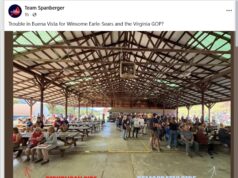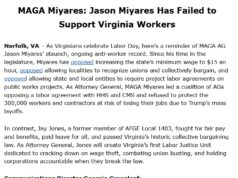When Ralph Nader wrote his book Unsafe At Any Speed in 1965, he documented how unsafe the Chevrolet Corvair was, and how General Motors and other car manufacturers opposed any effort to require safety features like seat belts because they didn’t want to spend money on such safety features. The safety measures that he wanted car makers to implement would cost about $700 per car; the car makers were in fact spending about 23 cents a car on safety features.
The publication of Unsafe At Any Speed and the National Academy of Science’s report “Accidental Death and Disability-The Neglected Disease of Modern Society” led to Congressional hearings , legislation to require installation of seat belts, and adoption of the Federal Motor Vehicle Safety Standards (FMVSS). The National Highway Traffic Safety Administration was formed in 1970, and has been responsible for investigating accidents and developing and implementing safety standards in vehicle and road design. Since safety became an important governmental priority, deaths per 100 million miles driven fell from about 5 in 1965 to 1.13 in 2009. The number of actual highway deaths has dropped from over 50,000 in 1965 to 33,808 in 2009. (See here for the data from NHTSA.)
In 2000, Congress created the Federal Motor Carrier Safety Administration (FMCSA); the FMCSA’s mission is to reduce crashes, injuries and fatalities involving large trucks and buses. The Republican majority in the House of Representatives are using the House Committee on Oversight and Government Reform hearings to try to prove their point that regulations are just costing businesses too much. Last week — on November 30, 2011 — the Subcommittee on Regulatory Affairs had a hearing devoted to a proposed FMCSA rule to reduce the amount of time that a commercial vehicle driver can drive from 11 hours a day to 10 hours a day, increasing rest periods, etc. Their position on the proposed rule is made clear by the title of the hearing — “The Price of Uncertainty: How Much Could DOT’s Proposed Billion Dollar Service Rule Cost Consumers This Holiday Season?” The idea seems to be that this regulation will be the Grinch That Stole Christmas. You can go to the Subcommittee’s website to see more.
Essentially, the industry argument is that this regulation change would impose unacceptable costs on trucking companies (there are other exceptions and provisions to make it somewhat flexible, but that is the main change proposed.) Studies show that the number of accidents rises sharply when a driver has been behind the wheel for more than 10 hours. The trucking industry came to these hearings making a cost-benefit analysis — that the cost of implementing these rules would be great, and that there would be relatively few additional lives saved. This was a familiar criticisms; conservative economist Thomas Sowell had argued in The Vision of the Anointed (1995) that Nader was ignorant and dismissive of the trade-off between safety and affordability.
This sort of cost-benefit analysis is central to the Republican analysis of regulations. Perhaps the most egregious example, and one of the best known, is a memo that was written for the Ford Motor Company in 1973 when it became known that Ford Pintos were likely to explode when rear-ended. The problem was that there was the car’s design allowed its fuel tank to be easily damaged if the car was rear-ended, which sometimes resulted in deadly fires and explosions. Trial lawyers bringing these cases showed that the fact that the Pinto didn’t have a true rear bumper or any reinforcing structure between the rear panel and the gas tank meant that in certain collisions, the tank would be thrust forward into the differential, which had a number of protruding bolts that could puncture the tank. On top of that, the doors could potentially jam during an accident, making it impossible for the occupants to get out of the car as it burst into flames. The Pinto became known as “the barbecue that seats four.”
Ford was aware of this design flaw but refused to pay for a redesign. Instead, they decided it would be cheaper to pay off possible lawsuits for resulting deaths. Mother Jones Magazine obtained the cost-benefit analysis that it said Ford had used to compare the cost of an $11 repair against the monetary value of a human life. They figured the $11 cost of making the repairs needed on all 12.5 million Pintos meant that the cost of doing the fix was going to be $137.5 million. On the other hand, Ford economists estimated the number of collisions that might be expected with Pintos being rear-ended, and estimated the number of people who would be killed or injured in those crashes, and the average cost of a lawsuit payout coming from those crashes. They decided that it was likely that there would be 2,000 crashes, with property damage of $700 each time, plus 180 people killed and 180 more injured. They figured that the value of the personal injury claim for those who lived would be about $67,000, and that the value of the human life lost would be $200,000. Doing the math, they figured that the cost of NOT fixing the Pintos would not exceed 180 x $67,000 plus 180 x $200,000, plus 2000 vehicles x $700. In sum, Ford estimated that its costs in NOT making the Pinto safe would have been $49.5 million. So they didn’t make the repairs.
But suppose the value of a life was not $200,000, but was $1,000,000? Now all of a sudden, the cost-benefit analysis makes it profitable to fix the Pintos. It all depends on the value that Ford put on a human life. And, in the present regulatory hearings, it all depends on the value that the trucking companies put on a human life.
Congressman Bruce Braley from Iowa is a former truck driver. He is also a former trial lawyer, representing people injured in accidents caused by, among others, sleepy truckers. And his questioning of the trucking company executives and their experts exposed the money-grubbing nature of the objection — these rules wouldn’t save very many lives, and the value of those lives saved doesn’t rise to the level of the costs to the trucking company of having to hire more truckers. Look here for Braley’s questioning.
Many plaintiff’s lawyers — the folks that Republicans tend to brand as simply “trial lawyers”, as though that were an epithet — know that when plaintiff’s lawyers raise the costs to businesses of not correcting negligent designs, they make it more likely that the manufacturers will decide to correct those negligent designs. If more plaintiffs had brought suit against Ford and had received larger judgments for Ford’s negligent design, perhaps Ford’s economist would have placed a higher value on human life. I can’t tell from the information available to me at the moment what value the trucking industry’s economist placed on a human life. But I will guarantee that it is less than the value placed on that life by the family who has lost a father, or a mother, or a child.
Cost-benefit analysis that requires placing a monetary value on a human life is a sordid business. But that is what the trucking industry is doing in these hearings, and it is what the Republican Subcommittee on Regulatory Reform is doing in these hearings and in the political discussions that it is having on the cost of regulation.
So when you hear politicians — particularly Republican politicians, though there are some conservative and “centrist” Democrats doing it as well — talk about the “costs of regulatory reform,” think about the cold calculations that go into that argument. Think about the value that industry, and the politicians, place on the value of a human life. And let’s choose a regulatory scheme that is not so sterile, and that values human life as a paramount, not a secondary, consideration.





![Monday News: Trump’s Lunacy Pushes China, Russia, India, etc. Together; “Happy Labor Day. Donald Trump and Elon Musk Are Screwing Workers.”; “Where is the [media’s] intense focus on Trump’s failing health?”; ““Trump says he is not a dictator. Isn’t he?”](https://bluevirginia.us/wp-content/uploads/2025/09/montage0901-238x178.jpg)








![Monday News: Trump’s Lunacy Pushes China, Russia, India, etc. Together; “Happy Labor Day. Donald Trump and Elon Musk Are Screwing Workers.”; “Where is the [media’s] intense focus on Trump’s failing health?”; ““Trump says he is not a dictator. Isn’t he?”](https://bluevirginia.us/wp-content/uploads/2025/09/montage0901-100x75.jpg)